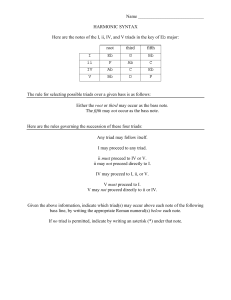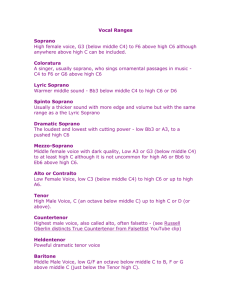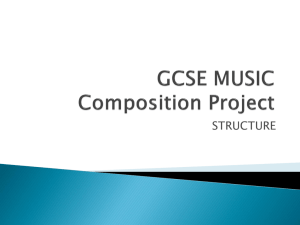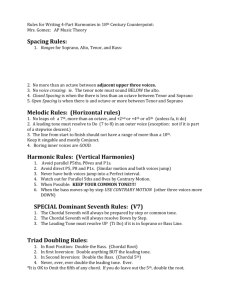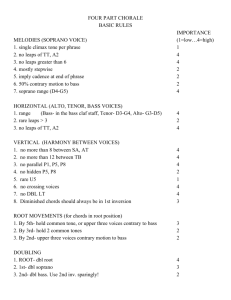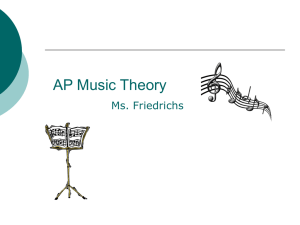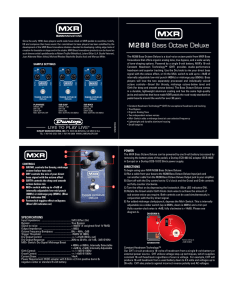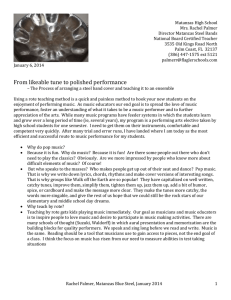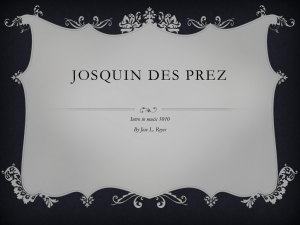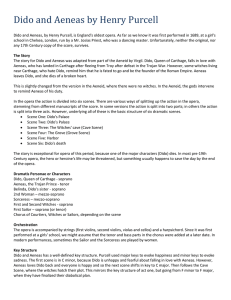Lecture 8
advertisement
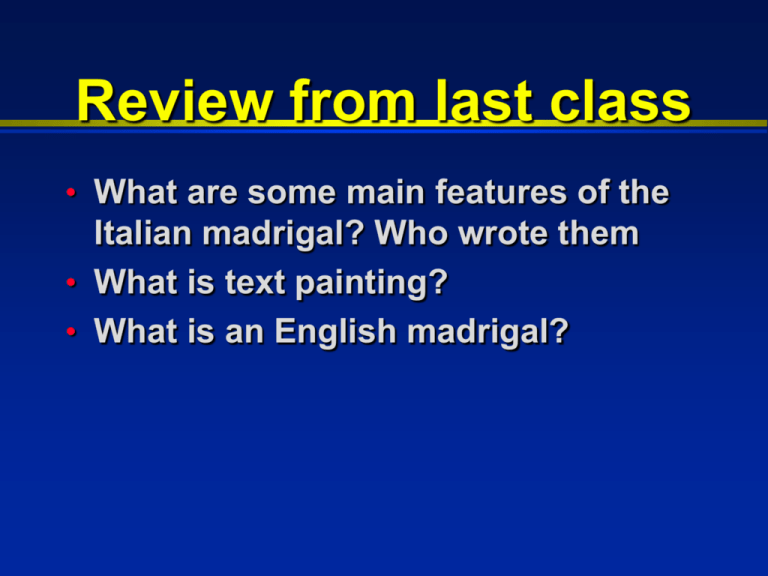
Review from last class • What are some main features of the Italian madrigal? Who wrote them • What is text painting? • What is an English madrigal? Announcements • Quiz Thursday, February 13 • Multiple choice format • Pick up a review sheet after class if you don’t have it INSTRUMENTS Families of the Orchestra • STRING (violin, viola, cello, bass) • WOODWIND (flute, oboe, sax, clarinet, bassoon) • BRASS (trumpet, horn, trombone, tuba) • PERCUSSION (pitched vs. non-pitched) • Chamber Ensembles (string quartet, brass quintet, etc.) More materials of music • Machlis textbook 131-43 INSTRUMENTS • Guitar, Lute, other strings • Keyboards • Piano • Organ • Harpsichord • Synthesizer The Octave • Produced by one string vibrating twice as fast as another • Notes an octave apart have the same name and sound • An octave can be DIVIDED in a number of ways • In western music, there are 12 notes per octave (as on the piano) Major and minor scale • Series of notes selected from the twelve notes of the octave • Difference: the third note • Chords can be major or minor as well • Chromaticsm: use of notes that are not normally in the major or minor scale Chords • Tonic is a rest chord • Other chords are active (feel like they have to more somewhere else) Baroque (1600-1750) • Rise of Instrumental Music • Tonality - harmony is regularized, sounds more modern • Chords move in regular patterms • Vigorous (Motoric) Rhythm Monody • a homophonic musical texture • one singer with instrumental accompaniment • Figured Bass • bass instrument + chording instrument (reads numbers written at bottom-harmonic blueprint) Baroque Opera • Philosophical background • The Camerata • Recreate the style of Greek Drama • drama sung throughout • INVENTION of Opera • stile rappresentativo • led to speechlike style of singing Opera • recitative - derivative of monody • disjunct vocal style • speech like • used for places where ACTION occurs • aria - formal number • lyrical style • organized formally • action stops- emotional REaction Dido and Aeneas • Listening guide 15 (not 14, as on the syllabus) • By Purcell • Based on Virgil’s Aeneid • Tragic story of fate- Aeneas must leave Dido to found Rome- she commits suicide “Dido’s Lament” • Affect -- a “Lament” (dissonaces used for expressive means) • Recitative - “Thy hand” -expressive • Aria- formal, organized and tuneful section • ground bass repeating bass linetypical for lament Johann Sebastian Bach (16851750) • 19 children- 2 wives • held positions in … • Weimar- court organist and chamber • Cöthen- chamber music • Leipzig- extensive church duties • cycles of cantatas for the entire church year (200 extant) Lutheran Cantatas • Liturgical music for protestant service • Bach’s works are multimovemented (5- 8) • with arias, recitatives and choruses • some based on a single tune that appears throughout the movements A Mighty Fortress • Choral tune “A Mighty Fortress” … • Created in the time of the Reformation, by Martin Luther himself • hymn tune- in German rather than Latin • originally sung monophonically- then in homophonic settings • permeates the entire cantata by Bach Cantata: A Mighty Fortress • Das wort, sie sollen (#8) • Homophonic setting • Bach harmonized the original tune in 4- parts • He also added a “continuo” part, (like a figured bass) • His son Wilhelm added the timpani and trumpets … for grandeur

